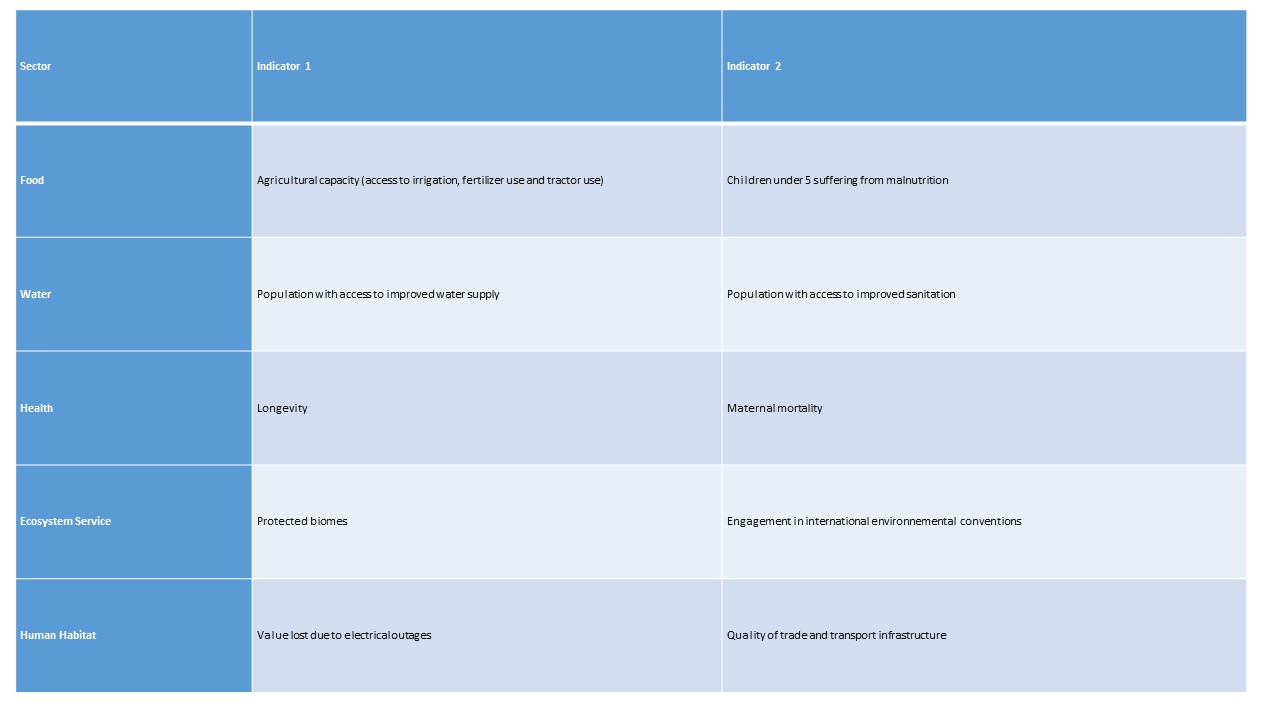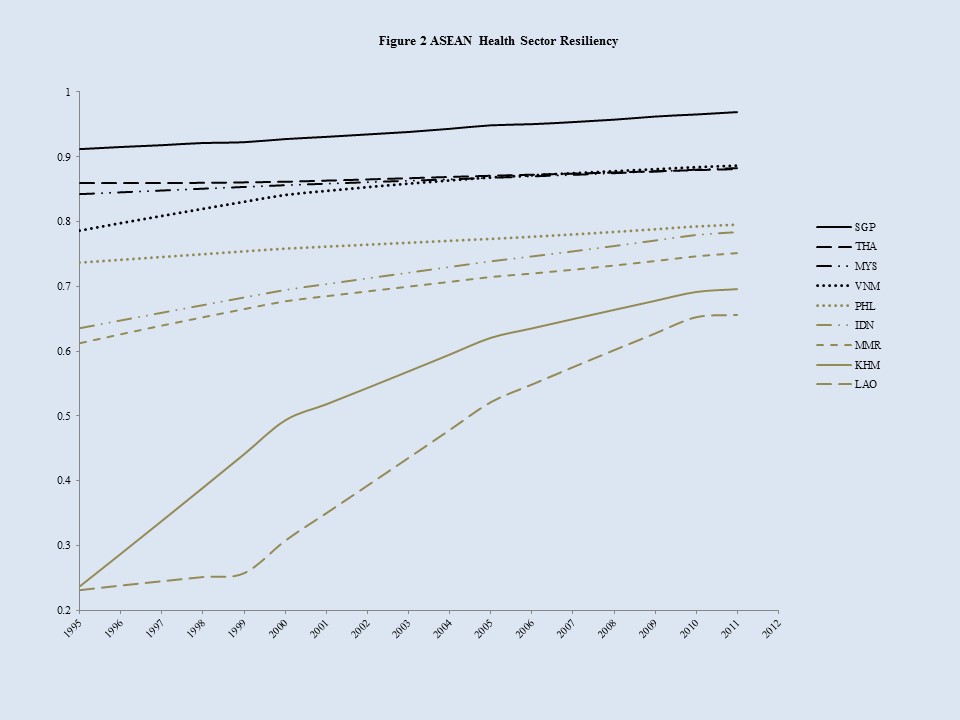For the past several months, my colleagues and I have heard a lot more about both adaptation and resilience*, especially in discussions with ND-GAIN’s corporate users. This guest blog, by ND Global Adaptation Index's Chen Chen, offers insights into resiliency particularly in the Association of South East Asian Nations. To measure countries’ resilience to rebound from adverse impacts of climate change, ND-GAIN focuses on the adaptive capacities of five sectors that provide communities with life-supporting assets and social services:
To measure countries’ resilience to rebound from adverse impacts of climate change, ND-GAIN focuses on the adaptive capacities of five sectors that provide communities with life-supporting assets and social services:
- Food
- Water
- Public health
- Ecosystem service
- Human habitat.
Chosen indicators reflect capacities that make social systems persist in a changing climate, based on historical data that scores countries’ performance in each of the five sectors. For instance, in the food sector, countries with a high rate of child malnutrition will possess low resiliency if climate-induced events strike the food-production system. In the ecosystem service system, countries’ engagement in international environmental conventions, such as the International Plant Protection Convention, shows a political willingness to commit to sustainable development and a technical capacity to take actions to ensure the proper functioning of ecosystems. Table 1 illustrates the set of indicators ND-GAIN uses to measure resiliency within these sectors:
Table 1 Indicators of Adaptive Capacity Measuring Resiliency to Climate Change
ND-GAIN analysis over the last 17 years finds that when these indicators are analyzed for 177 countries, lower-income countries will require a century to reach the level of resiliency of OECD (generally upper-income) countries.
ND-GAIN data also helps examine regional resiliency. For instance, ASEAN has been improving its resiliency to climate change over time from 1995 to 2012. In particular, it has made rapid progress in enhancing resiliency in water and health sectors by strengthening capacities to provide quality services in these areas. See Figure 1.
Standardized scores over time (0 indicates lowest resiliency and 1 indicates highest) for resiliency sectors in Association of Southeast Asian Nations (ASEAN).
Each country’s performance contributes to the trend of increasing resiliency. As illustrated in Figure 2 and considering the health sector, Singapore posts the highest resiliency and continues that strength, while Cambodia and Laos have show more improvement, relatively. In particular, Cambodia displays the highest rate of progress among nine ASEAN countries, contributing greatly to ASEAN’s overall health-sector resiliency improvement. Still, Cambodia and Laos, perhaps, will require decades at current rates to reach to the current level of resiliency in Singapore.
By analyzing our data to better understand resilience, ND-GAIN helps decision makers inform their supply chain, capital asset, community engagement and policy decisions with the future of lower-income countries in mind.
*Resilience: The capacity to recover quickly from difficulties (Oxford Dictionary)



